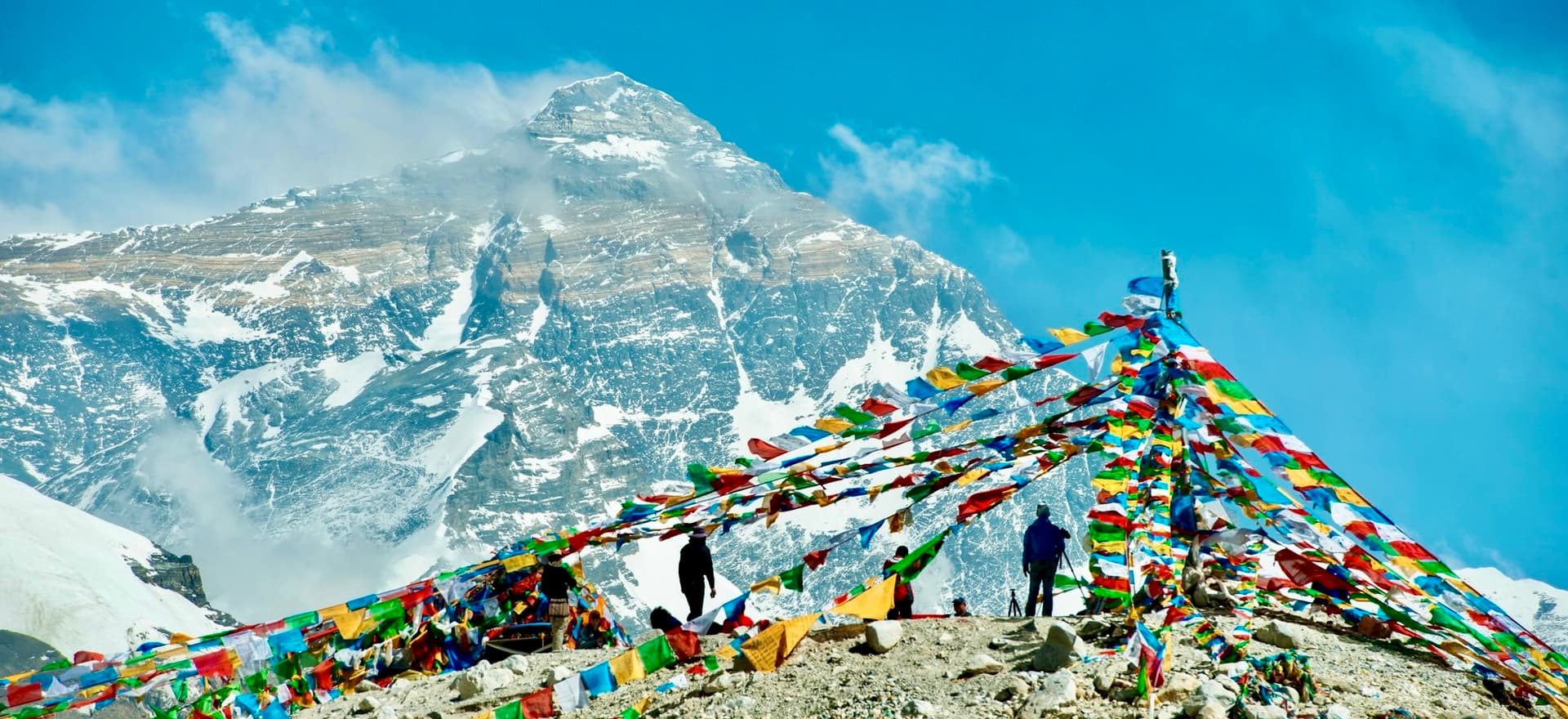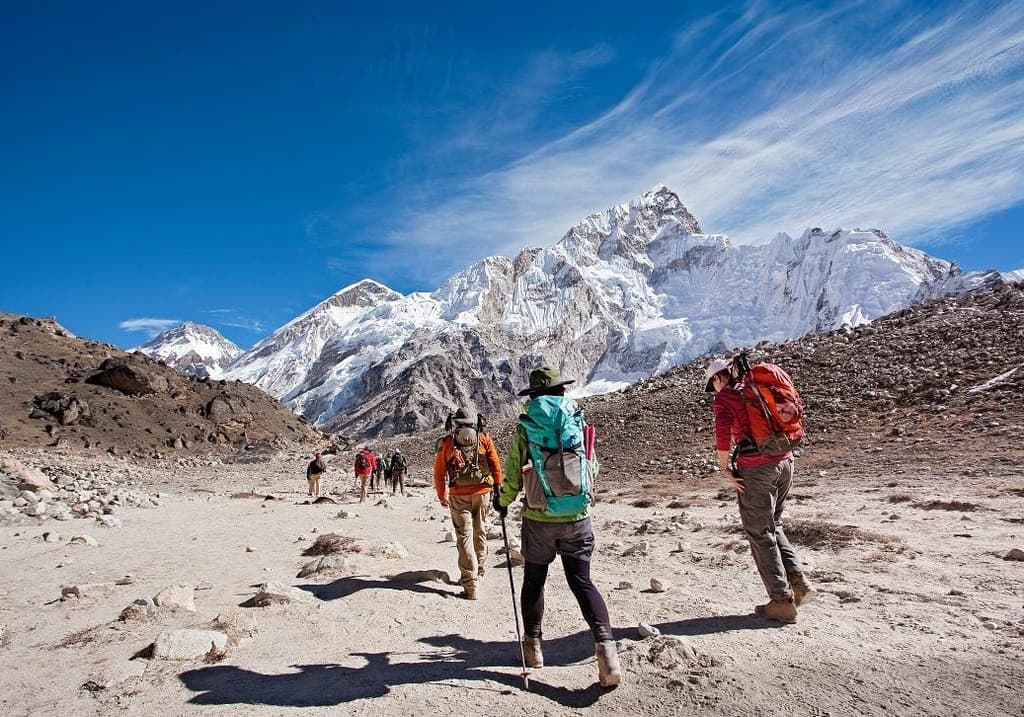An adventure to the Everest Base Camp is no small feat. This unforgettable trek through the foothills of the highest mountain in the world is an experience of a lifetime, but it also requires careful planning, preparation, and a clear understanding of what to expect. If you are planning this daring journey, this blog post is for you. In this comprehensive guide, we'll cover everything you need to know about trekking to Everest Base Camp, from the permits you need to obtain, how to prepare physically, what to pack, and the costs involved. Whether you're a seasoned trekker or a novice adventurer, we aim to equip you with all the necessary information you need for a successful and unforgettable expedition to Everest Base Camp. Let's start our journey
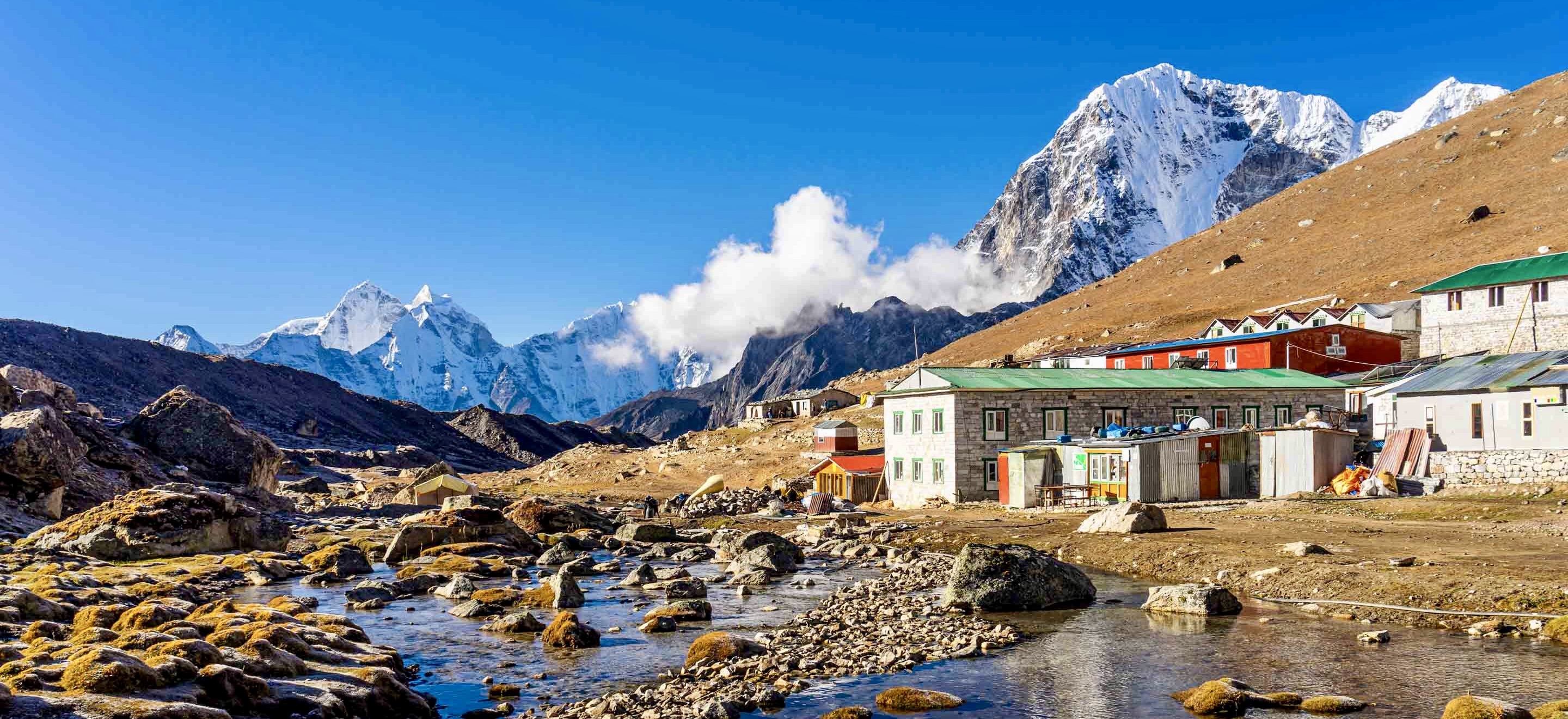
WHY TREK TO MOUNT EVEREST
Trekking to Mount Everest Base Camp is often listed as one of the most iconic treks in the world. The journey to the base of the highest peak in the world has attracted adventure seekers and nature lovers for decades.
Here are a few reasons why trekking to Mount Everest is worth considering:
- Unmatched Scenery: The trek offers stunning views of the Himalayas, including several of the world's highest peaks such as Everest, Lhotse, Nuptse, and Ama Dablam. The panoramic views from vantage points like Kala Patthar are unmatched.
- Cultural Insight: The trek gives an opportunity to experience the unique culture of the Sherpa people who inhabit the Solu-Khumbu region. Visiting ancient Buddhist monasteries and attending local festivals can be a transformative experience.
- Personal Challenge: The Everest Base Camp trek is physically and mentally challenging. Completing the trek can bring a great sense of accomplishment.
- Flora and Fauna: The Sagarmatha National Park, through which the trek passes, is a UNESCO World Heritage site and home to a variety of Himalayan flora and fauna.
- The Everest Base Camp: Being able to stand at the foot of Mount Everest, at the base camp used by mountaineering expeditions, is an experience of a lifetime.
- Teahouse Trekking: The Everest region has a well-established network of teahouses, which offer meals and accommodation. This makes for a comfortable trekking experience compared to many other high-altitude treks which require camping.
- Connection with Nature: Disconnecting from technology and the modern world, and spending days surrounded by the serene beauty of the mountains, can be a healing and rejuvenating experience.
Remember, while the allure of Everest is powerful, it's essential to prepare adequately and respect the mountain environment to ensure a safe and enjoyable trek.
WHAT IS THE EVEREST BASE CAMP TREK?
The Everest Base Camp Trek is one of the most popular and rewarding treks in the world. This high-altitude trek takes you through the heart of the Nepal Himalayas, offering stunning views of some of the world's tallest peaks, including Mount Everest itself.
Where Does It Begin?
Typically, the trek begins after a short, scenic flight from Kathmandu to Lukla, a small mountain town that serves as the gateway to the Everest region. From Lukla, trekkers make their way on foot through vibrant Sherpa villages, past prayer wheels and colorful flags, across swinging suspension bridges, and into the alpine wilderness of Sagarmatha National Park.
Route to Everest Base Camp
The most classic route then leads to Namche Bazaar, the economic hub of the region and an essential acclimatization stop. Beyond Namche, the trail meanders through villages like Tengboche, Dingboche, and Lobuche before finally reaching Gorak Shep, the last settlement before Everest Base Camp.
Along the route, trekkers have the chance to visit Tengboche Monastery, the largest in the Khumbu region, witness the stunning Himalayan panorama from Kala Patthar, and observe Everest up close to the Base Camp.
The Everest Base Camp
Reaching Everest Base Camp is the main goal of the trek. At an altitude of 5,364 meters (17,598 feet), it offers a close-up view of the Khumbu Icefall, and if you're lucky, you might even see mountaineering expeditions preparing to summit Everest.
Return Journey
After reaching the base camp, the route retraces its steps back to Lukla for a return flight to Kathmandu.
Duration
The entire journey, from Kathmandu to Everest Base Camp and back, typically takes around 12-16 days, including necessary acclimatization days to prevent altitude sickness.
What Makes It Unique?
What sets this trek apart is the awe-inspiring scenery and the cultural richness of the Khumbu region. With every step, you are surrounded by towering peaks, including four of the world's six highest mountains. The welcoming Sherpa people, their unique culture, and the opportunity to test your endurance at high altitudes make this journey unforgettable.
EVEREST BASE CAMP TREK DETAILS
The Everest Base Camp (EBC) Trek is one of the most iconic high-altitude hikes in the world, providing trekkers with an immersive experience in the heart of the Himalayas. Here are some of the essential details:
- Trek Duration: The standard itinerary for the EBC Trek typically takes 12-14 days, including acclimatization days to help trekkers adjust to the high altitude.
- Trek Route: Most EBC Treks start with a flight from Kathmandu to Lukla. From Lukla, the trek passes through villages such as Phakding, Namche Bazaar, Tengboche, Dingboche, Lobuche, and Gorakshep before reaching Everest Base Camp. The return journey often includes a stop at Kala Patthar, which offers exceptional views of Mount Everest at sunrise or sunset.
- Elevation: The trek begins at an altitude of approximately 2,860 meters (9,383 feet) in Lukla and gradually ascends to Everest Base Camp at 5,364 meters (17,598 feet). The highest point of the trek is Kala Patthar at 5,545 meters (18,192 feet).
- Difficulty Level: The EBC Trek is considered challenging due to the high altitude, rugged terrain, and potential for severe weather. However, with proper preparation, acclimatization, and physical fitness, most trekkers can complete the journey successfully.
- Best Time to Trek: The best times to undertake the EBC Trek are during the pre-monsoon (spring; March to May) and post-monsoon (autumn; September to November) seasons. These periods typically offer clearer skies, milder weather, and better views compared to the monsoon season (summer; June to August) or winter (December to February).
- Permits: Two permits are required for the EBC Trek: the Khumbu Pasang Lhamu Rural Municipality Permit and the Sagarmatha National Park Entry Permit. These can be obtained in Kathmandu or along the trek route.
- Costs: The cost of the EBC Trek varies widely depending on factors such as the trekking company, whether you hire guides and porters, and the level of accommodation and amenities you choose. As a general estimate, a 12-14 day trek might cost between $1,200 and $2,000, not including international flights to and from Nepal.
- Preparation: Physical fitness is crucial for the EBC Trek. It's recommended that trekkers engage in cardiovascular training (like running, cycling, or swimming), strength training, and hiking with a loaded backpack in the months leading up to the trek. Acclimatization to high altitude is also critical to avoid altitude sickness.
- Gear: Proper gear is essential for the EBC Trek, including warm clothing, sturdy hiking boots, a good-quality backpack, and equipment such as trekking poles, hats, gloves, sunglasses, and a headlamp.
Remember, a successful EBC Trek requires careful planning and preparation, but the reward is an unforgettable adventure in the world's most famous mountain range.
THE EVEREST BASE CAMP TREK: A COMPREHENSIVE ITINERARY
The trek to Everest Base Camp is a dream for many adventurers, with its stunning Himalayan landscapes, rich Sherpa culture, and the thrill of following in the footsteps of the world's greatest mountaineers. Here is a comprehensive itinerary, which you can, of course, tailor according to your needs, abilities, and interests.
Day 1-2: Kathmandu
Arrive in Kathmandu and get settled. Spend some time exploring this vibrant city, visit some of its historical and cultural landmarks, and make sure you're prepared for your trek. This is also when you'll meet your guide, get briefed about the trek, and collect your permits.
Day 3: Kathmandu to Lukla, then trek to Phakding
Take an early morning flight to Lukla (2,860m), and then trek to Phakding (2,610m). This is a relatively short and easy walk to get you acclimatized.
Day 4: Phakding to Namche Bazaar
Trek to Namche Bazaar (3,440m), the bustling Sherpa 'capital'. The trail follows the Dudh Koshi River and includes a tough climb toward the end, but you'll get your first glimpse of Everest!
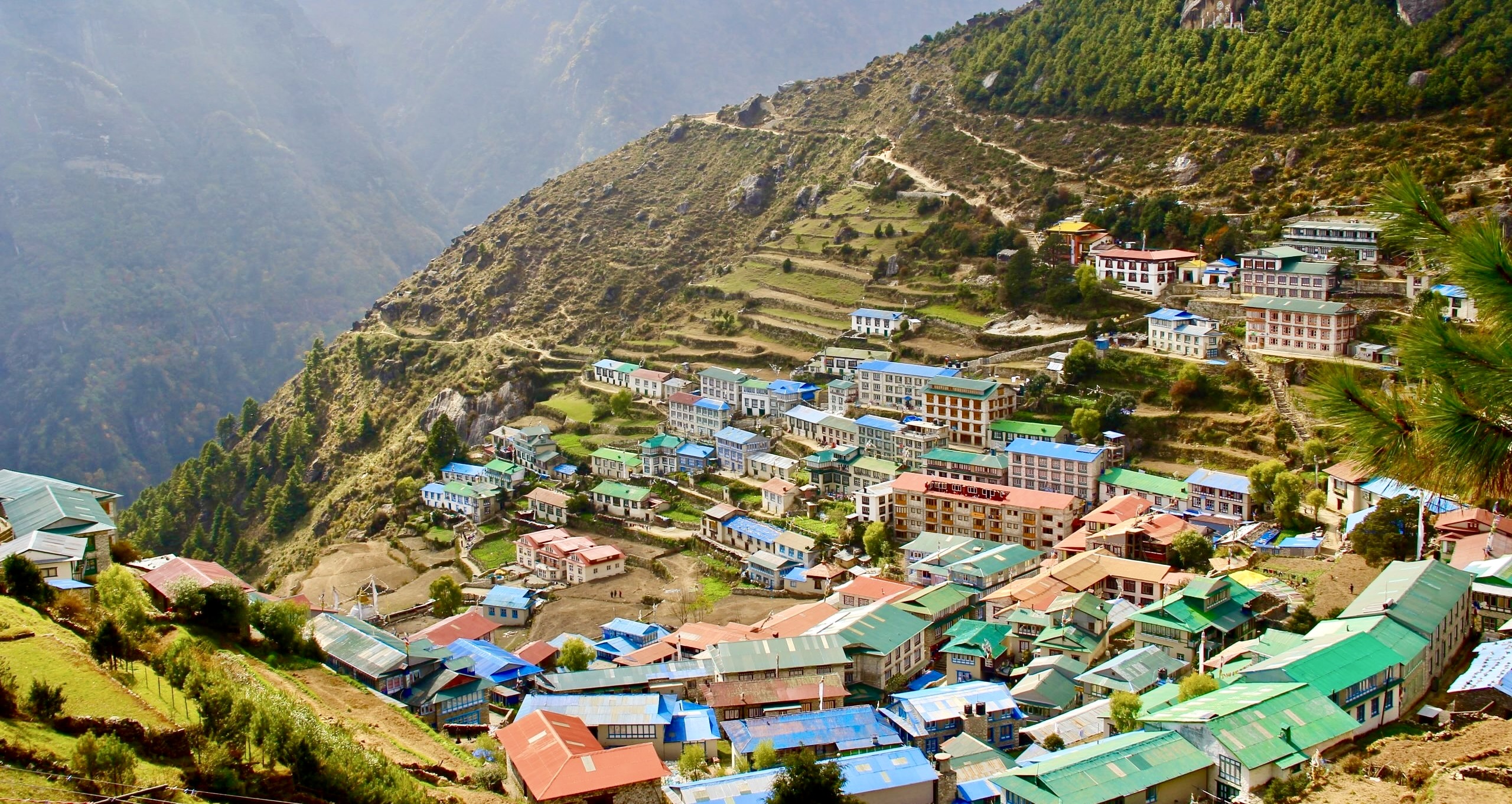
Day 5: Acclimatization Day at Namche Bazaar
Take a rest and acclimatization day in Namche Bazaar. Explore the local area, visit the Sherpa Museum, or hike up to the Everest View Hotel for panoramic views of Everest and other Himalayan giants.
Day 6: Namche Bazaar to Tengboche
Trek to Tengboche (3,860m), home to an important Buddhist monastery. You'll enjoy more spectacular mountain views along the way.
Day 7: Tengboche to Dingboche
Continue your trek to Dingboche (4,410m), passing through beautiful rhododendron forests and Sherpa villages.
Day 8: Acclimatization Day at Dingboche
Spend a second acclimatization day in Dingboche. You can explore the village, hike up to Nagarjun Hill for more amazing views, or just relax and prepare for the next part of the trek.
Day 9: Dingboche to Lobuche
Trek to Lobuche (4,940m), where you'll be surrounded by dramatic high peaks including the impressive Nuptse.
Day 10: Lobuche to Gorakshep to Everest Base Camp, then back to Gorakshep
This is the big day! Trek to Gorakshep (5,170m), then to Everest Base Camp (5,364m). Spend some time at base camp soaking in the achievement, then return to Gorakshep for the night.
Day 11: Gorakshep to Kala Patthar, then to Pheriche
Take an early morning trek to Kala Patthar (5,545m) for sunrise and the best views of Everest, then descend to Pheriche (4,280m) for the night.
Day 12-15: Pheriche to Lukla
Start the return trek to Lukla, passing through Tengboche and Namche Bazaar along the way.
Day 16: Lukla to Kathmandu
Fly back to Kathmandu from Lukla. Spend the rest of the day relaxing, exploring, and celebrating your successful trek!
Day 17: Depart Kathmandu
Wave goodbye to Nepal as your journey comes to an end. Until the next adventure!
Please note that this is a general guideline, and actual plans may vary depending on various factors like your tour operator, weather conditions, and your pace. Always remember to take enough time to acclimatize to the high altitude, stay hydrated, and listen to your body.
WHAT PERMITS DO I NEED FOR THE EVEREST BASE CAMP TREK?
Undertaking the journey to Everest Base Camp is both an exciting adventure and a serious commitment. One crucial aspect of planning your trek involves understanding and obtaining the necessary permits.
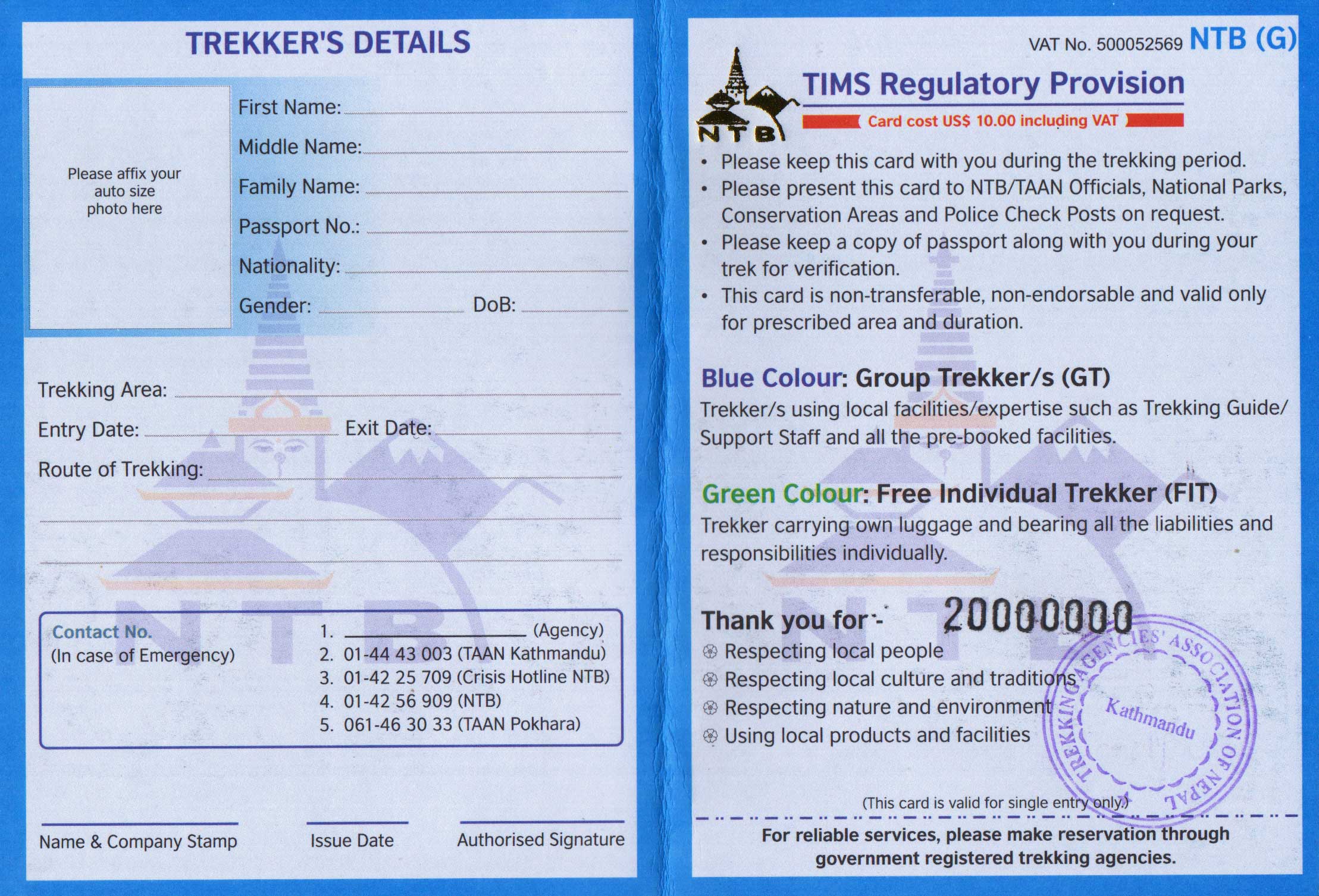
Here are the key permits you'll need for the Everest Base Camp Trek:
- TIMS Card (Trekkers’ Information Management Systems): This permit records your detailed information and itinerary. It's intended to aid in your safety and security while on the trek.
- Sagarmatha National Park Permit: This permit allows entry into the national park that encompasses much of the Everest region.
- Khumbu Pasang Lhamu Rural Municipality Entrance Permit: This local permit was introduced in 2018.
- Gokyo Lake Trek Permit (optional): If you're planning on including the Gokyo Lakes in your trek, you will also need the Gokyo Lake Trek Permit. You can obtain this permit in Kathmandu or upon arrival in the Sagarmatha National Park.
Please note, prices are approximate and can change, so check the latest information before you go. When obtaining your permits, you will need to provide details like your itinerary, insurance information, and passport details. Hiring a reputable local agency can often help streamline this process.
HOW DO I PREPARE PHYSICALLY FOR THE EVEREST BASE CAMP TREK?
Successfully completing the Everest Base Camp Trek requires a good level of physical fitness. Here are some essential steps you can take to prepare your body for the challenge:
- Aerobic Training: The Everest Base Camp trek requires stamina. Start with moderate aerobic exercise such as brisk walking or jogging and gradually increase the intensity and duration. Aim for at least 30 minutes of cardio exercise 3-4 times a week.
- Strength Training: Building strength in your legs and core will help you on steep inclines and declines. Exercises like squats, lunges, and planks are beneficial. Also, don't neglect your upper body, as carrying a backpack for extended periods will require upper body strength.
- Hiking: The best preparation for trekking is trekking itself. Start with short hikes and progressively increase the distance and the weight of your backpack. This will also help you break in your trekking boots and get used to the gear you will be using.
- High Altitude Training: If possible, include some high altitude training in your preparation. This will help your body acclimate to the thin air and reduce the risk of altitude sickness.
- Flexibility and Balance: Flexibility and balance exercises can help prevent injuries. Yoga and pilates can be beneficial for this.
- Nutrition and Hydration: A balanced diet rich in carbohydrates, proteins, and fats will fuel your training and recovery. Hydration is also key, especially at high altitudes where the risk of dehydration is increased.
- Rest: Don't forget the importance of rest. Your body needs time to recover and adapt to the increased physical demand.
- Medical Check-Up: Before you start your physical preparation, get a medical check-up to ensure you're in good health and capable of undertaking this challenging trek.
Remember, everyone’s fitness level is different, so tailor your training plan to suit your needs. Starting your preparation early will allow you to progress slowly and steadily, reducing the risk of injury. It's advisable to start preparing at least six months in advance of the trek.
WHAT IS THE COST OF THE EVEREST BASE CAMP TREK?
One of the most common questions for anyone planning to trek to Everest Base Camp is "How much will it cost?" The answer depends on various factors, including the length of your trek, the level of luxury you desire, and whether you go on a guided tour or independently. Below, we outline some of the main costs associated with the trek:
- Flight Costs: A round-trip flight from Kathmandu to Lukla, the starting point of the trek, will cost around $350 - 400.
- Permit Costs: The Khumbu Pasang Lhamu Rural Municipality permit (approximately $20), TIMS card and the Sagarmatha National Park Entry Permit (approximately $30).
- Guide and Porter Costs: Hiring a guide will cost you around $25 to $30 per day, while a porter will cost about $15 to $20 per day.
- Accommodation Costs: The cost of teahouses along the trek can range from $5 to $20 per night, depending on the level of comfort and services provided.
- Food and Drink Costs: Expect to spend around $25 to $30 per day on food and drink.
- Gear and Equipment Costs: The cost of trekking gear and equipment can vary greatly, depending on what you already own and the quality of the items you purchase. As an estimate, expect to spend $200 to $300 if you need to buy most of the essential items.
- Travel Insurance Costs: Comprehensive travel insurance that covers emergency helicopter evacuation is crucial. Expect to pay around $150 for a policy.
- Miscellaneous Costs: These include expenses for snacks, charging electronic devices, hot showers, and internet access, among other things. These can add up to around $10-$15 per day.
Adding all these costs, you can expect to spend anywhere from $1,200 to $2,000 for a basic 12-14 day trek to Everest Base Camp, excluding international airfare to and from Nepal.
However, keep in mind that there are also luxury trekking options available that provide higher standard accommodations and services, but these will significantly increase the cost.
BOOKING A GUIDE FOR THE EVEREST BASE CAMP TREK
Embarking on the Everest Base Camp trek is a dream for many adventure seekers around the world. While it is possible to complete the trek independently, hiring a guide significantly enhances the safety, convenience, and overall enjoyment of the journey. Below, we discuss some reasons why you should consider booking a guide for the Everest Base Camp trek, and how to go about doing it.
Why Book a Guide?
Safety: The Himalayan region can be challenging and unpredictable. A knowledgeable guide can help navigate the terrain, monitor your health, particularly in terms of altitude sickness, and provide emergency support if necessary.
Knowledge and Expertise: Local guides have in-depth knowledge about the culture, people, flora, fauna, and environment in the region. They can provide insights and information you might miss if you were trekking alone.
Logistics and Convenience: A guide can handle logistical aspects of the trek such as arranging accommodation, meals, permits, and transportation. This allows you to focus solely on the experience and the beautiful surroundings.
Cultural Interaction: Guides are usually locals who can provide a unique perspective on the traditions and customs of the Sherpa people living in the Everest region.
How to Book a Guide?
Tour Companies: There are many trekking companies, such as Luxury Holidays Nepal Pvt Ltd, that offer guided Everest Base Camp treks. They take care of everything from airport pickups, hotel reservations, permits, and of course, providing a guide and porter for the trek.
Cost: The cost of a guide can vary significantly depending on whether you book through a company or hire an independent guide. Generally, expect to pay anywhere from $20 to $30 per day for a guide's services. Keep in mind this usually does not include the guide's food, accommodation, insurance, and tip.
Credentials: Whether you're hiring through a company, ensure your guide is registered with the Nepal Tourism Board and has undergone training with the Trekking Agencies Association of Nepal (TAAN). They should also have a valid license.
Booking a guide for the Everest Base Camp trek is an investment in a safe, enjoyable, and enriching experience. With their local knowledge and expertise, a guide can turn a challenging journey into a memorable adventure.
HOW TO TREK TO EVEREST BASE CAMP
Trekking to Everest Base Camp is a remarkable journey filled with beautiful landscapes, thrilling heights, and deep cultural experiences. But getting there involves a bit of planning and preparation. Below is a step-by-step guide on how to embark on this life-changing adventure:
- Choose the Right Time: The best times to trek to Everest Base Camp are pre-monsoon (February to May) and post-monsoon (September to December). The weather is relatively stable during these periods, offering clear views and manageable trekking conditions.
- Training and Physical Preparation: A trek to Everest Base Camp is physically demanding. Regular cardiovascular training, strength training, hiking and trekking in local terrain, and altitude training, if possible, should be part of your preparation for at least 3 months before the trek.
- Secure Necessary Permits: You will need to obtain the TIMS card, Sagarmatha National Park permit, and the Khumbu Pasang Lhamu Rural Municipality entrance ticket. If you are trekking with a tour agency, they typically handle all these details.
- Decide on a Route: The most popular route begins from Lukla after a flight from Kathmandu. Other routes include the Jiri to Everest Base Camp Trek and Gokyo Lakes Trek. Each route offers different experiences and challenges.
- Book Flights: Kathmandu is the starting point for most people. From there, most trekkers take a local flight to Lukla, which is known as the gateway to Everest.
- Pack Proper Gear: Packing the right gear is crucial. Essential items include sturdy hiking boots, thermal clothing, a down jacket, gloves, sunglasses, sunscreen, water purifiers, a first-aid kit, and a good-quality sleeping bag.
- Hire a Guide or Porter: Hiring a local guide or a porter can significantly enhance your trekking experience, especially if you're not familiar with the terrain or don't speak the local language. They can also help carry your equipment and supplies.
- Acclimatization: Once you start your trek, it's essential to have days set aside for acclimatization to the high altitude. This helps to prevent altitude sickness, which can be life-threatening.
- Follow a Steady Pace: Trekking to Everest Base Camp is not a race. Keeping a steady pace helps your body to acclimatize and reduces the risk of altitude sickness.
- Stay Hydrated and Well-Nourished: Make sure to consume plenty of water and eat nutritious meals during the trek. This will keep your energy levels up and aid in acclimatization.
Embarking on the Everest Base Camp Trek is an unforgettable adventure. Though it's challenging, with the right preparation and a respectful attitude toward the environment and local culture, it will undoubtedly be a memorable journey. Remember, the goal is not just to reach the destination but also to enjoy the journey itself.
BOOKING AN EVEREST BASE CAMP TREK IN ADVANCE
Planning a trip to Everest Base Camp is a once-in-a-lifetime experience. It involves thorough planning and a significant amount of preparation. A key part of this planning is booking your Everest Base Camp trek well in advance. Here are the reasons why it's important and how to do it:
Why You Should Book in Advance
- Securing Permits: Trekking to Everest Base Camp requires several permits. Booking in advance ensures that all your permits will be arranged by your trekking agency before your arrival, saving you from unnecessary hassle.
- Flight Bookings: The flight from Kathmandu to Lukla - the starting point of the trek - is known for being booked out quickly, especially during peak seasons. Early booking ensures that you get a seat on the desired date.
- Accommodation: Everest Base Camp Trek involves staying in teahouses along the route. These can get filled up quickly during peak season. Booking in advance secures your accommodation.
- Guide and Porter Services: Good guides and porters are in high demand. Early booking helps secure experienced and reliable guide and porter services.
How to Book in Advance
- Choose a Trekking Agency: Look for a reputable trekking agency like Luxury Holidays Nepal.
- Select Your Trek: Different treks offer different experiences. The classic Everest Base Camp trek, the Gokyo Lakes trek, and the Jiri to Everest Base Camp trek are some options. Choose the one that suits your preference and fitness level.
- Discuss Your Plan: Talk with your chosen agency about your plans, including preferred dates, trek route, accommodation preferences, etc. They will provide you with a detailed itinerary and cost.
- Pay a Deposit: Most agencies will require a deposit to confirm your booking.
- Stay in Contact: Keep in touch with your agency for updates on flight schedules, weather conditions, and other necessary information.
Remember, the key to a successful Everest Base Camp trek lies in careful planning and early booking. Your advance booking ensures that everything is in place before you arrive, letting you focus on the trek itself.
EVEREST BASE CAMP PACKING LIST
Trekking to the Everest Base Camp is a serious adventure and requires careful preparation, including packing the right equipment and supplies.
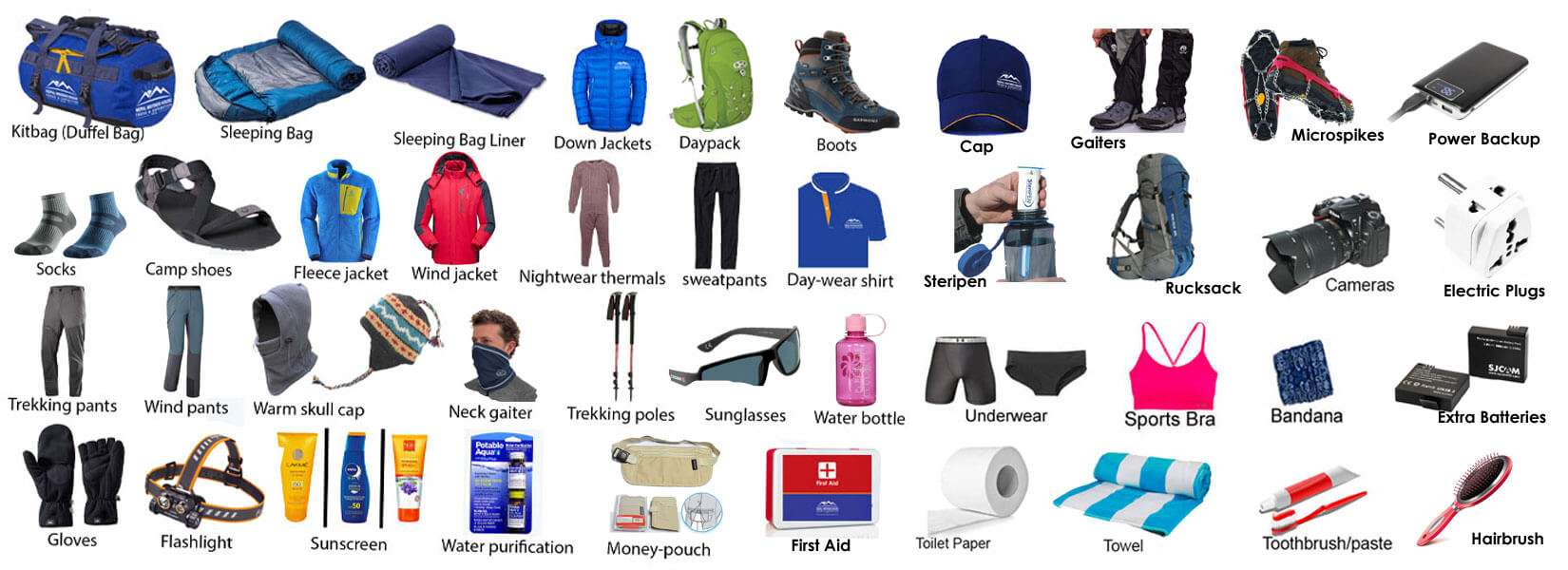
Here's a comprehensive packing list for your Everest Base Camp trek:
Clothing:
Base Layers: Bring moisture-wicking base layers (thermal underwear) for both the upper and lower body.
Trekking Shirts: Pack both short and long-sleeve shirts. Quick-dry materials are preferable.
Trekking Pants and Shorts: Convertible pants that double as shorts are practical. You'll want long pants for colder days and shorts for warmer ones.
Fleece Jacket and Pants: For added warmth during cooler days and nights.
Insulated Jacket: A down or synthetic insulated jacket is needed for colder temperatures.
Hard Shell Jacket and Pants: Waterproof and windproof jackets and pants are essential for protection against rain and wind.
Underwear and Socks: Bring several pairs of moisture-wicking underwear and trekking socks. A pair or two of thermal socks for colder temperatures can be useful too.
Gloves: Bring lightweight gloves for mild days and insulated gloves for colder temperatures. Waterproof ones are a plus.
Hat and Scarf: To protect your head and neck from both sun and cold.
Boots: Make sure to have sturdy, waterproof trekking boots that are broken in and comfortable.
Gear:
Backpack: A 40-60 liter backpack with good support is typically sufficient. Also, consider a rain cover for your pack.
Trekking Poles: They reduce strain on your knees and improve stability.
Headlamp: Essential for early morning starts and evening walks. Don't forget the extra batteries.
Water Bottle or Hydration Bladder: Stay hydrated. The dry mountain air can dehydrate you quickly.
Sunglasses and Sunscreen: High UV exposure at altitude requires good eye protection and sunscreen.
Sleeping Bag: A four-season sleeping bag is recommended as teahouses can get quite cold.
Health and Wellness:
First Aid Kit: Include band-aids, antiseptic cream, bandages, pain-relief medication, altitude sickness medication, water-purification tablets, and any personal medication.
Toiletries: Toothbrush, toothpaste, biodegradable soap, travel-sized shampoo, personal hygiene items, wet wipes, and hand sanitizer.
Snacks: Energy bars, trail mix, chocolate, etc. are good for extra energy on the trail.
Miscellaneous:
Camera: For capturing the breathtaking scenery.
Portable Charger: There may not be many charging points on the trail.
Travel Documents: Passport, visa, travel insurance documents, and necessary permits for trekking.
Cash: For paying for services along the way and tipping your guide and porters.
Remember, while you want to be prepared, it's also important to pack as light as possible since you'll be carrying your pack for long distances. Consider your own needs and adjust this list as necessary. Happy trekking!
EVEREST BASE CAMP TREK: WIFI/ELECTRICITY AVAILABILITY
When you're trekking towards the highest peak in the world, you might be surprised to know that you can still stay somewhat connected to the world you've left behind. While it's not perfect, you can find electricity and Wi-Fi on the Everest Base Camp trek.
Electricity:
Electricity is available in most teahouses along the trek, but its reliability and availability decrease as you ascend. It's recommended to bring a portable power bank or a solar charger to keep your devices charged. Teahouses usually offer charging services for a small fee, and you can expect to pay around $2-$5 per hour.
Remember that the power supply in Nepal is 220V, so you may need a voltage converter if your devices are designed for a different voltage. Outlets in Nepal typically accept Type C or Type D plugs, so you may need a plug adapter as well.
Wi-Fi:
Most teahouses and lodges offer Wi-Fi service, either for free or for a small fee. The further you go from Lukla, the more likely you are to be charged for Wi-Fi. Keep in mind that the connection can be slow and unreliable, especially during peak hours when many other trekkers are also using the service.
If staying connected is a priority for you, consider buying a local SIM card with a data package. Ncell and NTC are the two major network providers in Nepal, and both have coverage along the Everest Base Camp trek. Remember to check with your provider about data packages suitable for your needs.
EVEREST BASE CAMP TREK: BEST TIME OF YEAR
The best time to trek to Everest Base Camp depends largely on your personal preferences and tolerances for weather conditions. However, there are generally two peak seasons each year when conditions are typically most favorable: pre-monsoon (spring) and post-monsoon (autumn).
Spring (March through May):
This is a popular time to trek to Everest Base Camp, as the weather is generally mild and stable, with daytime temperatures at lower elevations ranging from 10°C to 15°C (50°F to 59°F). At higher altitudes, temperatures can drop below freezing, especially at night. The trails can be busy during this time as many mountaineering expeditions set up their base camps in preparation for summit attempts.
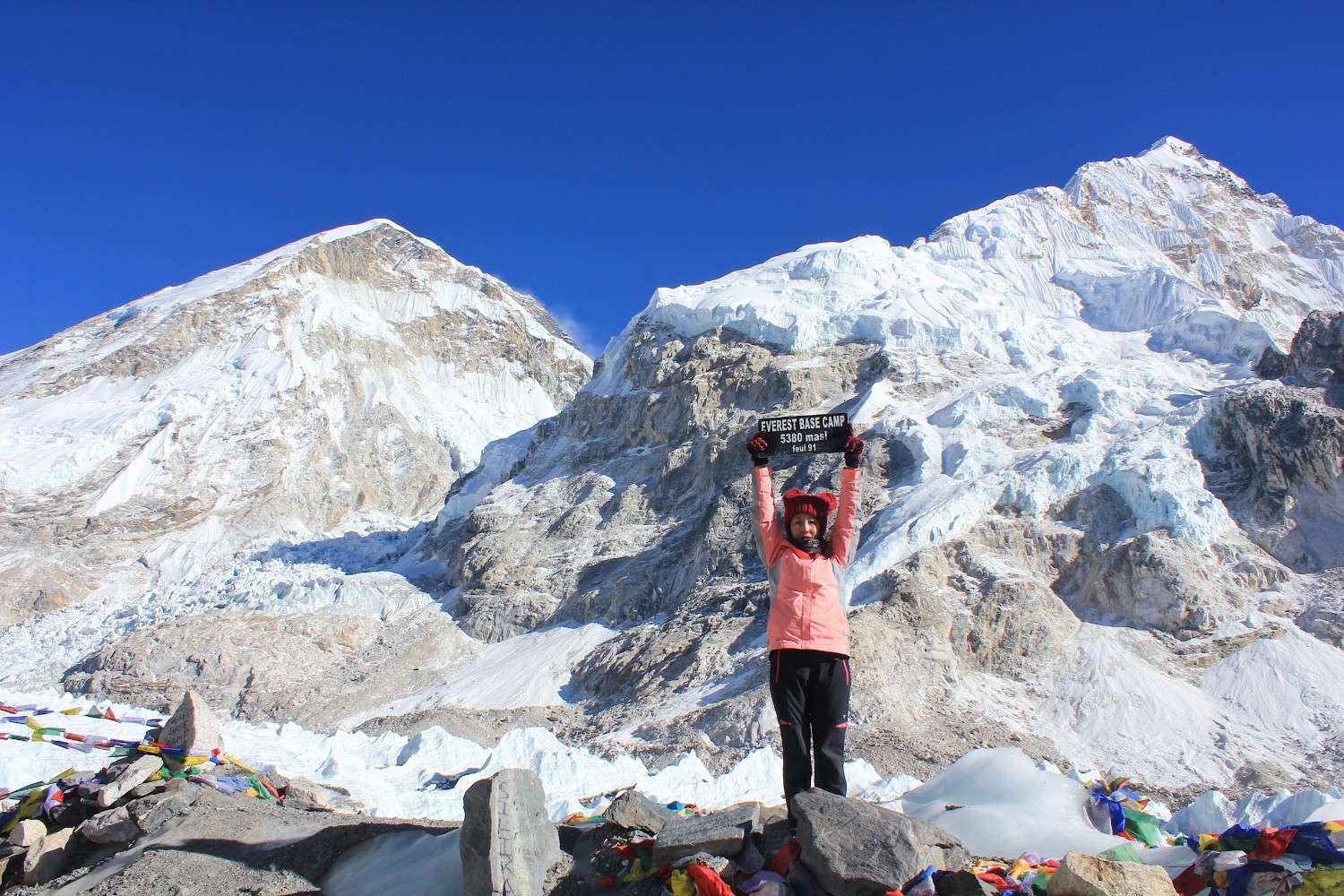
One of the highlights of trekking in spring is the opportunity to see the stunning rhododendron forests in bloom, adding a burst of color to the trek. Also, visibility is generally good, although not as crystal clear as in autumn.
Autumn (September through November):
The autumn months are considered the best time for trekking in Nepal due to the excellent weather conditions. Following the monsoon, the skies are typically clear providing stunning views of Everest and surrounding peaks. Daytime temperatures are pleasant, making for comfortable trekking conditions, although nights can get quite cold as you ascend.
The trails can be busy, especially in October, so if you prefer quieter trails, you might want to consider trekking in November.
Winter (December through February):
Trekking during the winter months is possible but much less common due to the cold temperatures and heavy snowfall at higher altitudes, which can make the trek more challenging and the passes often become impassable. However, the trails are much quieter during this time and the views can be spectacular on clear days.
Summer/Monsoon (June through August):
This is the least popular time to trek due to the monsoon season. The trails can be slippery and muddy, and there are leeches in lower altitudes. However, the higher regions like Everest, being in the rain shadow, see less precipitation. The advantage is fewer crowds, and the landscape is lush and green.
In conclusion, while the spring and autumn seasons are the most popular times to trek to Everest Base Camp, you can choose the time that suits your preferences and needs the best.
EVEREST BASE CAMP TREK TEMPERATURE
The temperatures on the Everest Base Camp trek vary greatly depending on the time of year and altitude. Here's a rough guide of what to expect:
- Spring (March to May): During the daytime, temperatures can reach up to 15°C (59°F) at lower altitudes (below 3500m), and around -6°C (21°F) at the base camp level (5360m). Nighttime temperatures can drop to 2°C (36°F) at lower altitudes and -15°C (5°F) at the base camp.
- Summer/Monsoon (June to August): Daytime temperatures can reach up to 18°C (64°F) at lower altitudes and 2°C (36°F) at the base camp. Nighttime temperatures can drop to 4°C (39°F) at lower altitudes and -10°C (14°F) at the base camp.
- Autumn (September to November): Daytime temperatures can reach up to 15°C (59°F) at lower altitudes and -8°C (18°F) at the base camp. Nighttime temperatures can drop to -1°C (30°F) at lower altitudes and -14°C (7°F) at the base camp.
- Winter (December to February): Daytime temperatures can reach up to 10°C (50°F) at lower altitudes and -17°C (1°F) at the base camp. Nighttime temperatures can drop to -5°C (23°F) at lower altitudes and -25°C (-13°F) at the base camp.
EVEREST BASE CAMP TREK DIFFICULTY
Trekking to Everest Base Camp is challenging, but it is not a technical climb and doesn't require any prior mountaineering skills or experience. However, the difficulty level should not be underestimated. Here are the key factors that contribute to the difficulty level:
- Distance: The total distance of the Everest Base Camp trek (round trip) is approximately 130 km or 80 miles. This is not just a weekend hike; it's a lengthy journey that will test your endurance and stamina.
- Altitude: One of the biggest challenges on the Everest Base Camp Trek is dealing with altitude. The base camp sits at a height of 5,364 meters (17,598 feet). As you ascend, the oxygen level in the air decreases, which can lead to Acute Mountain Sickness (AMS). Therefore, proper acclimatization is crucial.
- Terrain: The trails on the Everest Base Camp trek can be steep, rocky, and rugged. You'll also cross suspension bridges, climb numerous stone steps, and traverse potentially icy and snowy paths near the base camp.
- Weather: The weather in the Himalayas can be unpredictable, and conditions can change rapidly. Cold temperatures, wind, and snow can add to the difficulty of the trek.
- Physical Fitness: While no extreme fitness level is required, you should be in good physical condition and have a decent level of cardiovascular fitness. The fitter you are, the more you'll enjoy the journey.
The Everest Base Camp trek is considered moderately difficult. With appropriate preparation, training, and a slow and steady pace, most people with a reasonable level of fitness can complete the trek.
EVEREST BASE CAMP ALTITUDE
The Everest Base Camp is situated at an altitude of 5,364 meters (17,598 feet) above sea level. This trek is one of the most popular in the world, not only because it leads to the base of the highest peak in the world, Mount Everest (8,848.86 meters / 29,031.7 feet), but also for its unique cultural insight and breathtaking Himalayan scenery.
However, the altitude of the Everest Base Camp is high enough to present the possibility of Acute Mountain Sickness (AMS) or altitude sickness. As you gain elevation, the oxygen level in the air decreases, which can make physical activity more challenging and can potentially lead to AMS.
Here are the altitudes of some key locations along the trek:
Lukla (the starting point of the trek): 2,860 meters (9,383 feet)
Namche Bazaar (the main trading center of the Khumbu region): 3,440 meters (11,286 feet)
Dingboche: 4,410 meters (14,468 feet)
Lobuche: 4,940 meters (16,207 feet)
Gorak Shep: 5,164 meters (16,942 feet)
Everest Base Camp: 5,364 meters (17,598 feet)
The journey to Everest Base Camp is not just about reaching the destination, but about acclimatizing to the altitude gradually. It's important to follow the "climb high, sleep low" rule and ensure your body is properly acclimated before you ascend to higher elevations. Always listen to your body, stay hydrated, and go at your own pace. If you experience any symptoms of altitude sickness, it's important to notify your guide immediately.
EVEREST BASE CAMP TREK DISTANCE
The Everest Base Camp Trek is an unforgettable journey that immerses you in breathtaking views, diverse cultural experiences, and challenging, rewarding trekking. But how far will you actually walk on this adventure?
The total round trip distance of the Everest Base Camp Trek is approximately 130 kilometers or 80 miles, starting from Lukla to the Everest Base Camp and then back to Lukla. This distance is typically covered over the course of about 12-14 days, including several acclimatization days.
Here's a breakdown of the typical trekking distances between stops along the classic Everest Base Camp route:
Lukla to Phakding: 8 km
Phakding to Namche Bazaar: 11 km
Namche Bazaar to Tengboche: 10 km
Tengboche to Dingboche: 11 km
Dingboche to Lobuche: 12 km
Lobuche to Gorak Shep: 5 km
Gorak Shep to Everest Base Camp, then back to Gorak Shep: 8 km
Gorak Shep to Pheriche: 13 km
Pheriche to Namche Bazaar: 15 km
Namche Bazaar to Lukla: 16 km
Please note that these distances are approximate and the exact length can vary based on the specific route taken each day.
HOW CHALLENGING IS THE EVEREST BASE CAMP TREK?
Embarking on the Everest Base Camp Trek is a remarkable adventure, but it is not without its challenges. The trek requires a good level of physical fitness and determination, with trekkers covering approximately 130km (round trip) over steep, rugged, and often icy terrains.
Altitude Sickness
One of the main challenges of the trek is dealing with altitude sickness, or Acute Mountain Sickness (AMS). AMS can occur at altitudes over 2,500 meters and is more likely as the elevation increases. The trek to Everest Base Camp reaches an altitude of 5,364 meters, making altitude sickness a serious concern. It's essential to monitor for symptoms of AMS, such as headache, nausea, dizziness, and fatigue, and seek medical attention if necessary.
To help acclimate to the altitude and reduce the risk of AMS, trekkers are advised to take the climb slowly and spend extra nights in locations like Namche Bazaar and Dingboche. Drinking plenty of water, avoiding alcohol, and getting plenty of rest can also help manage altitude sickness.
Physical Fitness
The trek is physically demanding, with long days of hiking often over rough and steep terrain. Trekking days can last from 5 to 8 hours and require a good level of cardiovascular fitness. Regular exercise and training, including hiking, running, swimming, or cycling, are recommended to prepare for the trek. Strength training for the legs and core will also help with the steep inclines and uneven paths.
Weather Conditions
Weather in the Everest region can be unpredictable, and severe weather can make trekking more difficult. Cold temperatures, snow, and wind are common, especially at higher altitudes. Proper clothing and gear are essential to staying warm and dry.
Mental Preparation
Finally, the mental aspect of the trek should not be underestimated. The physical exertion, combined with high altitudes, basic accommodation, and being away from home, can be mentally challenging. A positive attitude, patience, and determination can go a long way in overcoming these obstacles.
HOW TO BE SUCCESSFUL WHEN TREKKING AT ALTITUDE
Trekking at high altitudes like the Everest Base Camp, which is approximately 5,364 meters above sea level, can be quite challenging. The following tips can significantly enhance your chances of successfully completing a high-altitude trek:
- Prepare Well: It is crucial to physically prepare for the trek. This includes cardiovascular training, strength training, and endurance building. Regular hiking, cycling, swimming, and running can help prepare your body for the strains of high-altitude trekking.
- Acclimatize Properly: Acclimatization is key when it comes to altitude treks. It helps your body adapt to the lower oxygen levels at high altitudes. A rule of thumb is to ascend slowly and not climb more than 300-500 meters in a day once you are above 3000 meters.
- Stay Hydrated: High-altitude regions are usually very dry, and you can become dehydrated quickly without realizing it. Drink plenty of water and avoid alcohol, which can dehydrate you and worsen altitude sickness.
- Eat Well: Your body will need more energy than usual, so it’s important to eat a balanced diet with plenty of carbohydrates.
- Listen to Your Body: If you feel any symptoms of altitude sickness, such as headache, nausea, dizziness, or fatigue, it’s important to take them seriously. Descend to a lower altitude if your symptoms worsen.
- Use Trekking Poles: Trekking poles reduce the impact on your knees and assist in maintaining balance.
- Dress Appropriately: Dress in layers so that you can adjust your clothing to the temperature and your level of exertion.
- Hire a Guide: A local guide will be familiar with the signs of altitude sickness and will know what to do if someone becomes ill. They will also know the route, the local culture, and ways to ensure an overall safer experience.
- Consider Pre-Trek Altitude Sickness Medication: Consult with your doctor about medications like Acetazolamide (Diamox) that can help you acclimatize faster.
Remember, the key to a successful high-altitude trek is to take it slow and steady. It's not a race; it's more important to give your body time to adapt to the altitude and enjoy the journey.
Trekking to Everest Base Camp is an incredible journey that requires significant preparation, but is truly worth the effort. From obtaining the right permits, understanding the costs involved, getting physically prepared, and knowing what to expect from the trek, every step of the journey can be thrilling and full of learning experiences.
LUXURY EVEREST BASE CAMP TREK
Luxury Everest Base Camp Trek is designed for those who want to reach the base of the world's highest mountain in a comfortable and luxurious way. It combines the experience of trekking in the majestic Himalayas with top-notch accommodation and service.
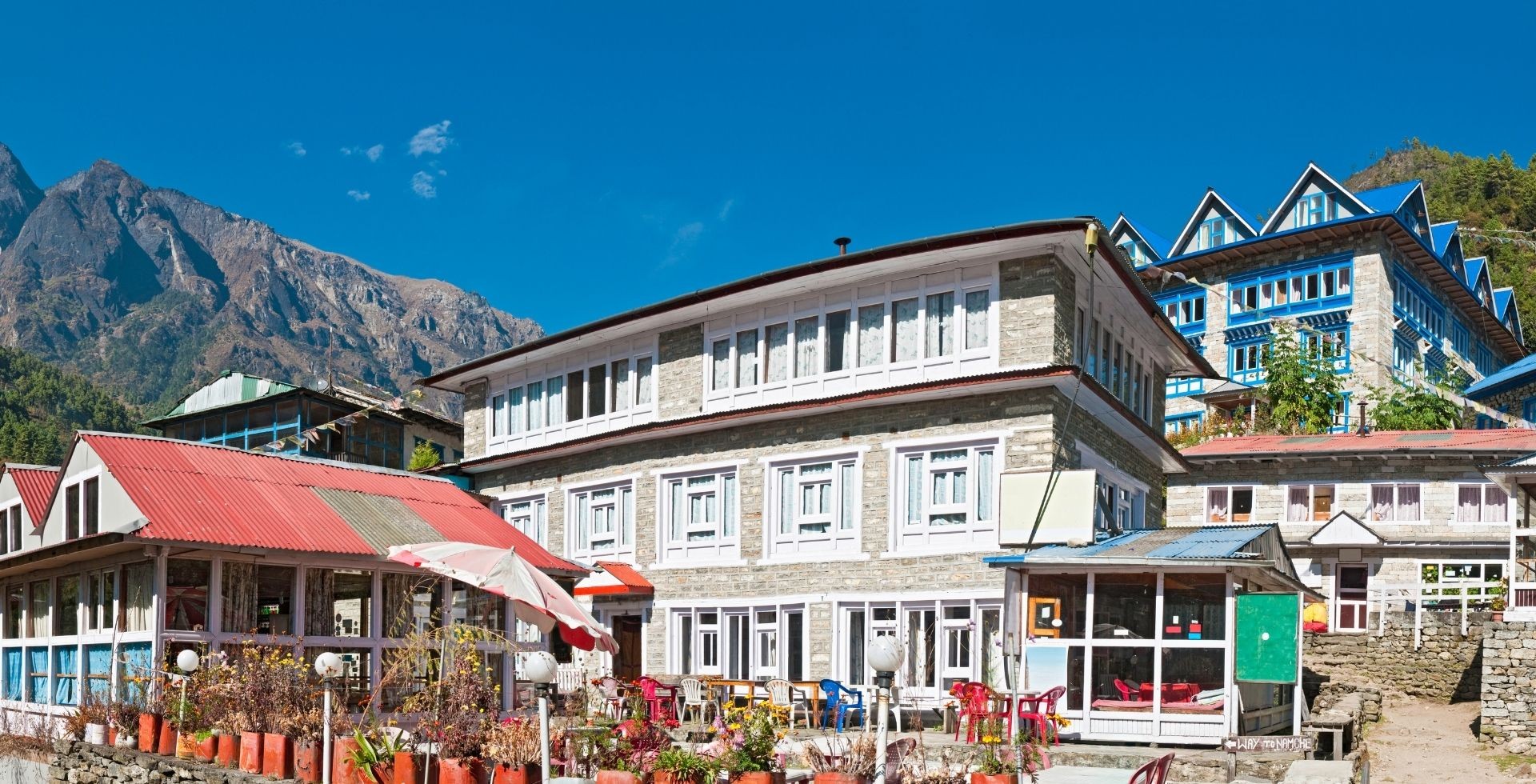
The trek starts with a flight from Kathmandu to Lukla. As you trek through the Khumbu region, you'll experience the local Sherpa culture, Buddhist monasteries, and stunning mountain views, all while staying in luxury lodges and guest houses. These accommodations are hand-picked for their superior service and comfort, often providing private rooms, comfortable bedding, western-style toilets, and even hot showers.
The journey will lead you through the beautiful Sagarmatha National Park, where you might spot rare species like the Snow Leopard or Red Panda. You will visit the buzzing Sherpa capital, Namche Bazaar, and the culturally rich villages of Tengboche and Dingboche. Each day will be filled with breathtaking views of the mountains, including Mount Everest, Lhotse, and Ama Dablam.
The trek culminates with your arrival at Everest Base Camp and a hike to Kala Patthar, the best viewpoint for Mount Everest. A helicopter ride back to Kathmandu is usually included in luxury packages, offering an aerial view of the trekking route and an exciting end to your adventure.
Luxury treks also typically include additional services such as a personal guide and porter, all meals, a comprehensive first-aid kit, and even extras like a complimentary massage or cultural show. These treks are perfect for those who wish to challenge themselves without compromising comfort and luxury.
The Luxury Everest Base Camp Trek offers a once-in-a-lifetime adventure with all the comforts and amenities you could wish for. It is a perfect choice for those who want to tackle the Everest Base Camp challenge while enjoying a touch of luxury along the way.
EVEREST HELI TREK
The Everest Heli Trek is an exciting blend of trekking in the majestic Everest region and a luxurious helicopter tour of the Himalayas. This unique trekking option allows you to experience the best of the Everest region in a short amount of time while minimizing physical stress and maximizing comfort and luxury.
The trek typically starts with a scenic flight from Kathmandu to Lukla, which is renowned for having one of the most dramatic runways in the world. From there, you trek to various locations such as Namche Bazaar, Tengboche, and Dingboche, soaking up the rich local Sherpa culture, visiting historic monasteries, and relishing in the breathtaking views of some of the world's highest mountains, including Mount Everest, Lhotse, Nuptse, and Ama Dablam.
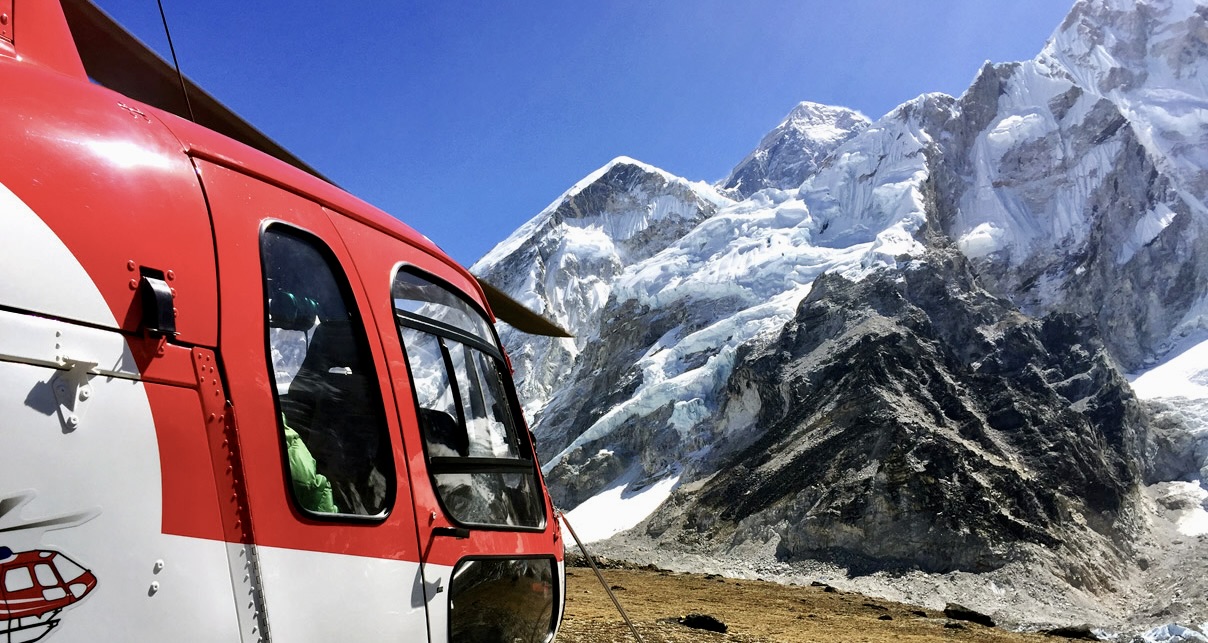
The high point of the trek is reaching Everest Base Camp and climbing up to Kala Patthar, the best viewpoint to see Mount Everest in all its glory. Following the culmination of the trek, a helicopter will pick you up from Gorakshep (near Everest Base Camp) for an aerial tour of the Everest region.
During this helicopter tour, you will get up close and personal with the Himalayan peaks, see stunning glaciers, and appreciate the vastness and grandeur of the mountain range from a unique perspective. The helicopter then flies you back to Kathmandu, cutting short the return trek and giving you more time to explore the rich culture and history of the Nepalese capital.
Everest Heli Trek is an excellent choice for those who are short on time, those who want to avoid the challenging return trek, or those who wish to add a dash of luxury and comfort to their adventure. By choosing the Everest Heli Trek, you combine the excitement of trekking with the thrill of a helicopter ride, providing a memorable and awe-inspiring experience in the heart of the Himalayas.
Trekking in the Everest region is not just a physical challenge but also an opportunity to immerse yourself in the rich culture and natural beauty of Nepal. You'll encounter Sherpa culture, monasteries, fauna, and flora, and of course, the magnificent Himalayan landscapes that will leave you in awe.
Preparation is key to a successful trek to Everest Base Camp. Understanding the trail, acclimating properly, staying hydrated and nourished, and being in the right physical and mental state can make your journey smooth and enjoyable.
The journey may be challenging and the altitude tough, but with each step taken, you'll be closer to reaching the base of the highest peak in the world. The feeling of accomplishment, when you reach Everest Base Camp, is indescribable and will remain etched in your memory forever.
Remember, the journey is as important as the destination. So, take your time, enjoy each moment, and let the magic of the Himalayas captivate you. Let this guide be your starting point as you embark on the adventure of a lifetime. Happy Trekking!
Always choose a reputable and experienced trekking agency for your safety and best overall experience. Luxury Holidays Nepal Pvt Ltd is a highly recommended agency for arranging a safe and memorable Everest Base Camp Trek.
FREQUENTLY ASKED QUESTIONS: ALL YOU NEED TO KNOW TREKKING TO EVEREST BASE CAMP
Q: How long does the Everest Base Camp trek take?
A: Typically, the trek to Everest Base Camp takes around 12-14 days, including acclimatization days. However, the duration can vary based on your itinerary and trekking speed.
Q: What permits do I need for the Everest Base Camp Trek?
A: You need a TIMS card, a Sagarmatha National Park entry permit, and a Khumbu Pasang Lhamu Rural Municipality permit for the trek. If you plan to trek through Gokyo Lakes or other regions, additional permits might be needed.
Q: How do I prepare physically for the Everest Base Camp Trek?
A: You should start preparing several months in advance. This includes aerobic exercises like running, swimming, cycling, and strength and flexibility training. Hiking with a weighted backpack can be particularly beneficial.
Q: What is the cost of the Everest Base Camp Trek?
A: The cost can vary based on several factors, such as your travel agency, the season, the length of your trek, and your personal spending habits. On average, it can range from $1,000 to $3,000.
Q: What is the best time of year to do the Everest Base Camp Trek?
A: The best times to trek to Everest Base Camp are during the pre-monsoon (March to May) and post-monsoon (September to November) seasons. These months offer the best weather conditions and clearer views.
Q: What are the symptoms of altitude sickness?
A: Altitude sickness can cause headaches, nausea, dizziness, shortness of breath, and a loss of appetite. If you experience any of these symptoms, it’s important to descend to a lower altitude as soon as possible.
Q: Is it safe to trek to Everest Base Camp?
A: Yes, with the right preparation and precautions, it is safe. It's recommended to go with a reputable trekking agency that provides experienced guides and ensures adequate acclimatization days.
Q: Do I need a guide for the Everest Base Camp trek?
A: While it's not mandatory, it is highly recommended. A guide not only helps with navigation but also offers valuable insights into the local culture and environment. Furthermore, in case of any emergencies, having a knowledgeable guide can be lifesaving.
Everest Region Trekking Packages
Everest Heli Trek with Kalapathher Landing
Gokyo Lakes and Everest Base Camp Trek
Everest Base Camp Heli Trek - 9 Days
VVIP Everest Base Camp Luxury Trek
Everest Base Camp and Gokyo Lakes Luxury Helicopter Trek
Luxury Everest Base Camp Trek - 14 Days
If you need any further information, please contact us, Email: at [email protected], Phone: at +977- 985 100 5129 (WhatsApp)

